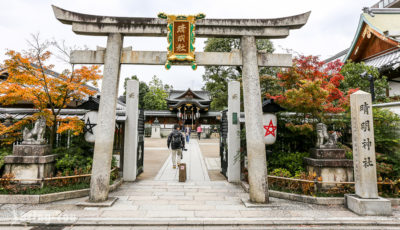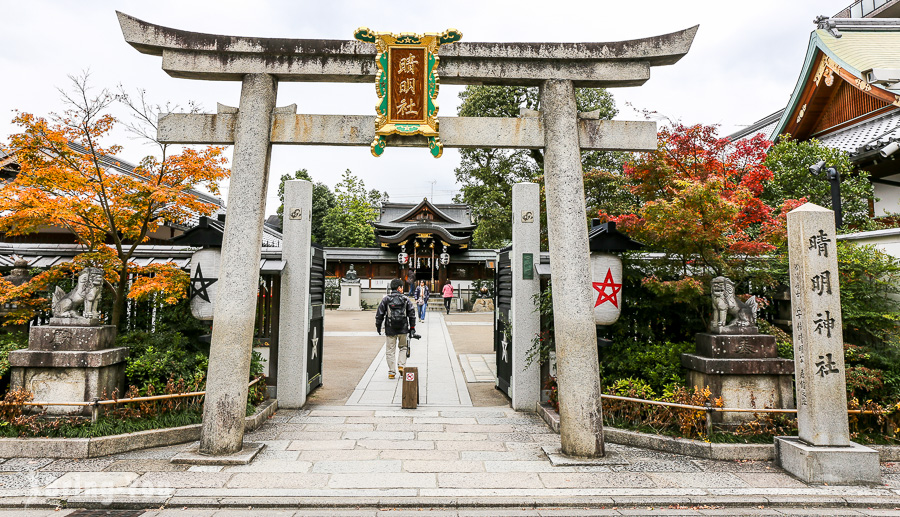
Seimei Shrine, although not as bustling as Fushimi Inari Taisha, Kiyomizu-dera, or Kinkaku-ji, holds its own special allure in a quiet corner of Kyoto.
The shrine was established in 1007, dedicated to the legendary onmyoji named Abe no Seimei, who was said to be an ‘onmyoji’ in the mid Heian period.
Whether you’re familiar with the mystical tales or simply intrigued by his story, this shrine is a must-visit destination that has gained a wave of popularity.
Picture this: the cheers erupted as Japanese figure skater Yuzuru Hanyu claimed first place in the Pyeongchang Winter Olympics. His captivating performance was accompanied by his very own composition, a mesmerizing rendition of SEIMEI from the renowned movie “Onmyoji.” Suddenly, the shrine that reveres Abe no Seimei was swept up in a whirlwind of excitement.
Today, we invite you to join us on a journey through time and space as we explore the very grounds where Abe no Seimei once walked and lived. Delve into the captivating world of divination and immerse yourself in the rich tapestry of Japanese folklore. From mysterious rituals to hidden wisdom, this shrine holds the secrets that will transport you to a realm beyond imagination.
Let’s embark on this extraordinary journey together!
Discovering Seimei Shrine and the Magical World of Onmyoji
Even though I first encountered the name Abe no Seimei while reading the opening volume of “Onmyoji” during my high school days, the mystical world depicted in Yumemakura Baku’s writing, where humans, ghosts, and demons coexisted in the ancient capital of Heian, had a captivating classical allure. While the story wasn’t filled with explosive climaxes, it left me yearning to delve deeper into its quiet enchantment. The subtle emotions it evoked were truly unforgettable.
In the novel, Seimei Shrine serves as the residence of Abe no Seimei. In ancient Japan, Seimei held the esteemed position of onmyoji, a role that encompassed divination, magic, rituals, prayers, legislation, and astronomical observations. Within the pages of this beautiful novel, Seimei is portrayed as a skilled illusionist and master of various magical arts, finding delight in playing tricks on his friends. As you explore the shrine, you’ll have the opportunity to delve into the rich tapestry of Seimei’s life and immerse yourself in the captivating realm of ancient Japanese mysticism.
And guess what? In the real world, Seimei Shrine is actually believed to be the birthplace of a fascinating historical figure named Abe no Seimei. He was seriously legendary during the Heian Period, making waves in the court as an astrologer, cosmologist, and astronomer from the 10th to 11th centuries.
Now, here’s the cool part. Abe no Seimei was so legit at what he did that he scored himself a sweet pad super close to the imperial court. Picture this: right smack in the northeastern corner of the original Imperial Palace grounds, near this bridge called “Ichijo Modoribashi.” Why that specific spot, you ask? Well, according to Chinese beliefs, all the bad vibes come from the northeast. So, our dude Abe no Seimei was like, “I got this!” and used his supernatural “powers” to protect the court from any shenanigans.
You can still check out some remnants of that bridge he hung out near when you visit the shrine. It’s pretty rad, right? Oh, and get this: just two years after Abe no Seimei passed away, they built Seimei-jinja Shrine right where he used to live. Talk about keeping the court safe and sound from evil forces. That’s some serious dedication!
So, next time you swing by Seimei Shrine, remember that you’re stepping into the birthplace and former stomping grounds of a legendary astrologer who kept the imperial court on lockdown. Pretty awesome, if you ask me!
How to Get to Seimei Shrine
- Address: 806 Seimeicho, Kamigyo-ku, Kyoto City
- Opening hours: 9:00~18:00
- Official website
Seimei Shrine is tucked away from the bustling streets of Kyoto, offering a serene escape. The vicinity boasts renowned landmarks such as Nijo Castle, Kyoto Imperial Palace Park. Although buses offer convenient access to the Seimei Shrine, there are alternative transportation methods worth considering. Here are the detailed options to help you plan your visit:
- City Bus No. 9: Board at Kyoto Station, alight at “Ichijō Ohashi Seimen Shrine-mae” and walk for 2 minutes.
- City Bus No. 12: Board at Hankyu Karasuma Station or Subway Shijo Station, alight at “Ichijō Ohashi Seimen Shrine-mae” and walk for 2 minutes.
- City Bus No. 12, 59: Board at Keihan Sanjo Station, alight at “Kuramagawa Imadegawa” and walk for 2 minutes.
- Sightseeing Bus No. 101: Alight at “Kuramagawa Imadegawa” and walk for 2 minutes. (Last bus available)
- Subway: Alight at “Kuramagawa Imadegawa” and walk for 12 minutes.
Pentagrams on Seimei Shrine’s Torii Gates
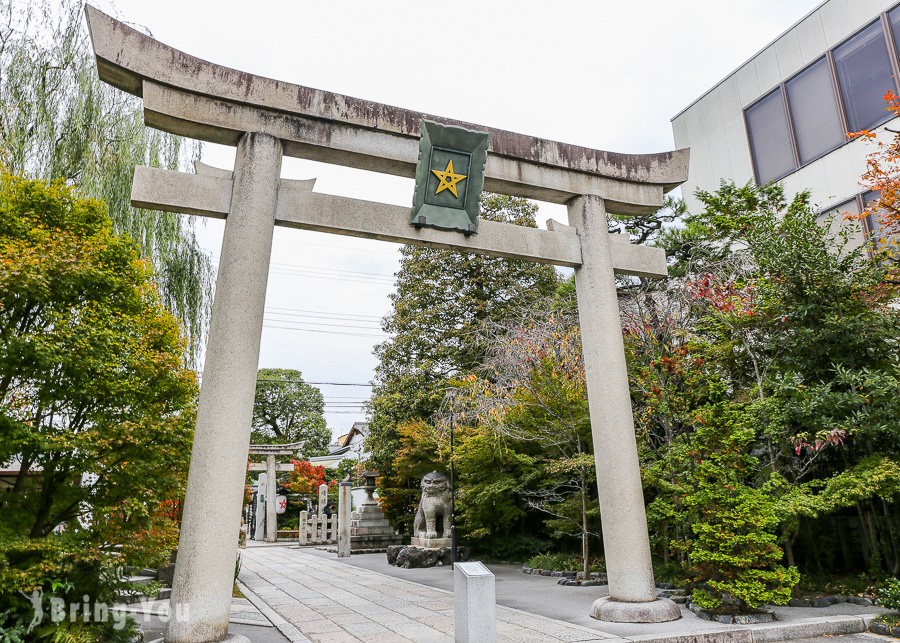
As you step into the Seimei Shrine, your journey begins by passing through the first torii gate. What sets this gate apart is its unique feature. Unlike other torii gates that bear the name of the enshrined deity on the lintel, the first torii gate of Seimei Shrine proudly displays the shrine emblem “Seimei Kikyo.” This emblem, a pentagram, represents the harmonious balance of the five elements—metal, wood, water, fire, and earth—as well as the union of yin and yang. It’s a captivating symbol that sets the tone for the mystical experience that awaits you.
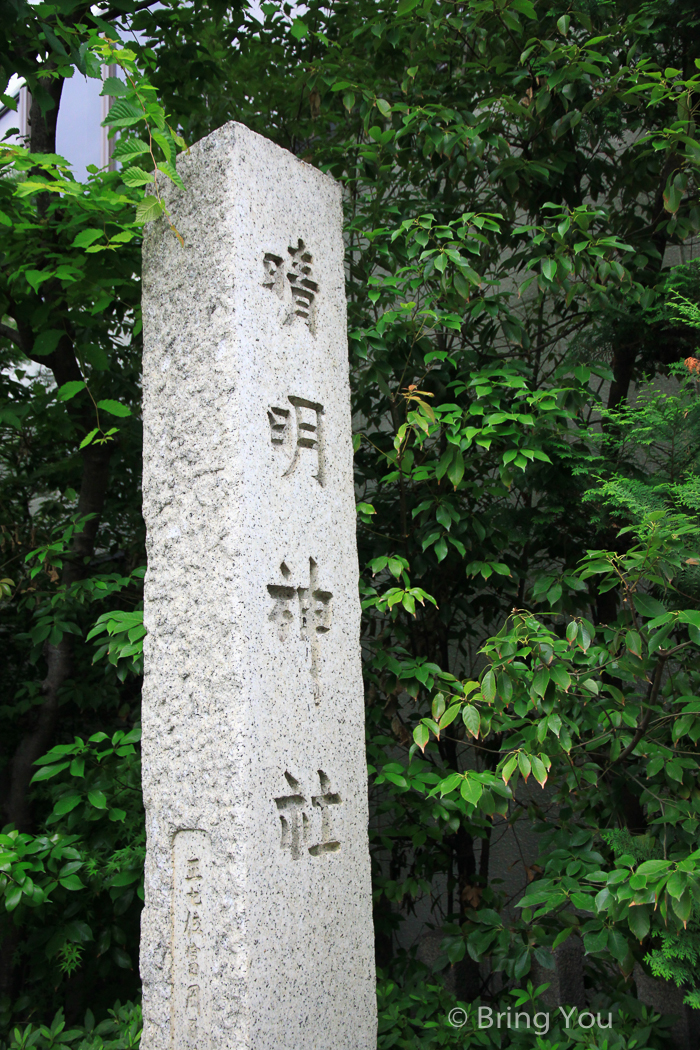
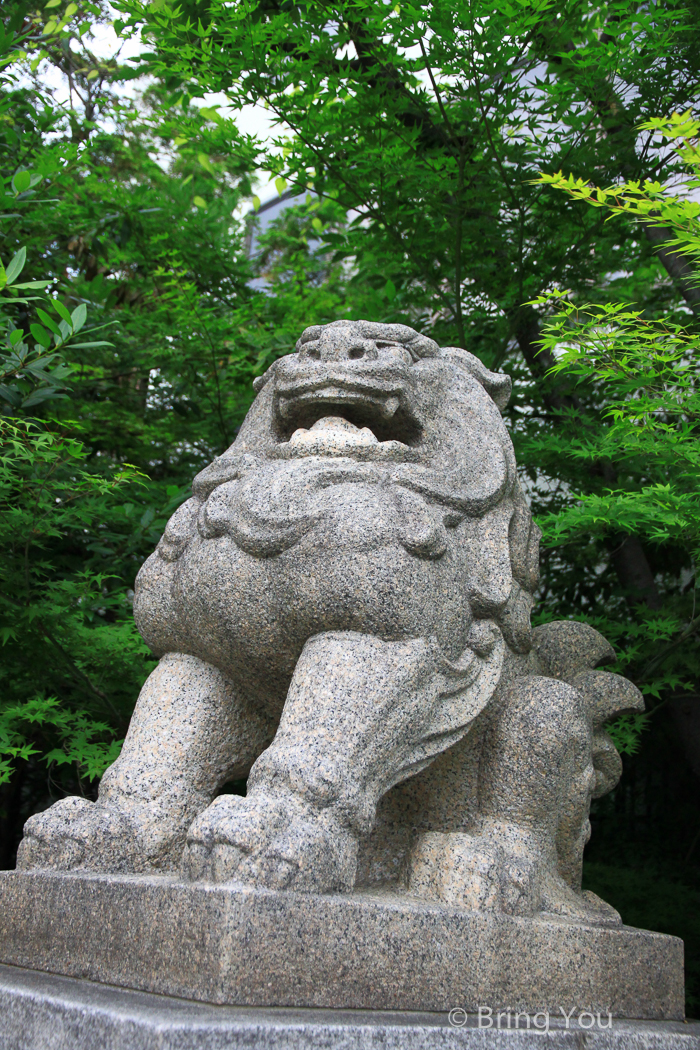
Ichijo Modoribash and Shikigami
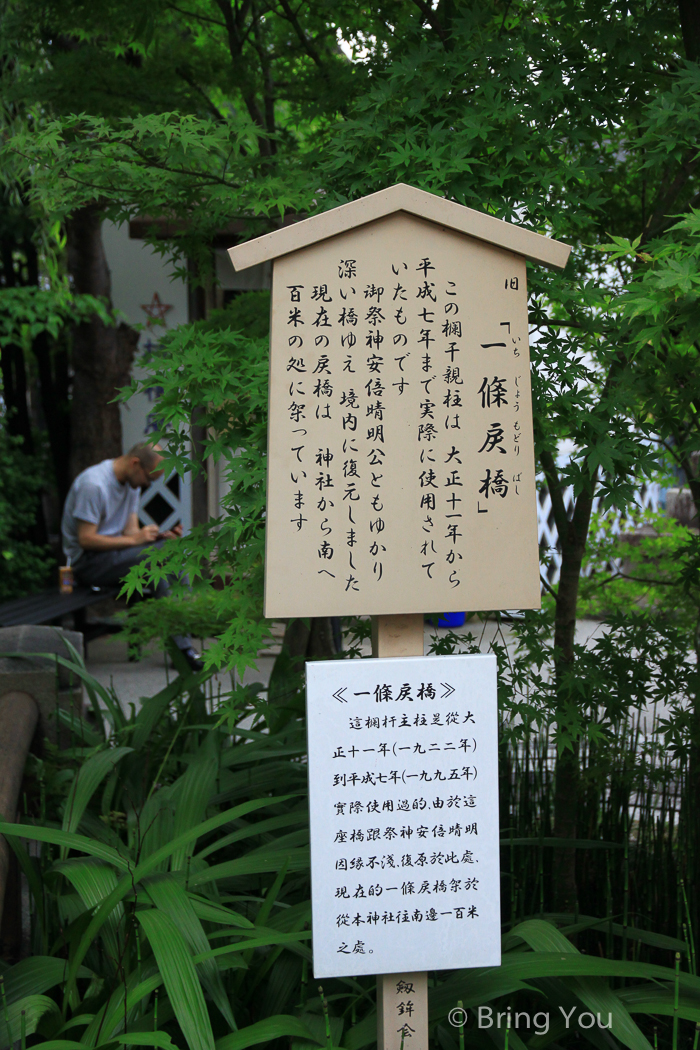
Next, we arrive at a fascinating bridge known as Ichijo Modoribashi. This bridge is steeped in captivating legends and tales. According to one story, it is believed that Abe’s loyal shikigami, a spirit bound to serve its master, resides beneath this very bridge. To ease his wife’s fears, the shikigami remains sealed beneath the bridge during ordinary days. The name “Ichijo” translates to “returning” in Japanese, and there is a legend that passing a deceased person across the Ichijo Bridge can grant them a second chance at life through the power of magic. It is also said that if one speaks to the bridge, their message will be relayed to Abe through the shikigami. Furthermore, there is a belief that women crossing the Ichijo Bridge may encounter a twist of fate, disrupting their prospects of a prosperous marriage.
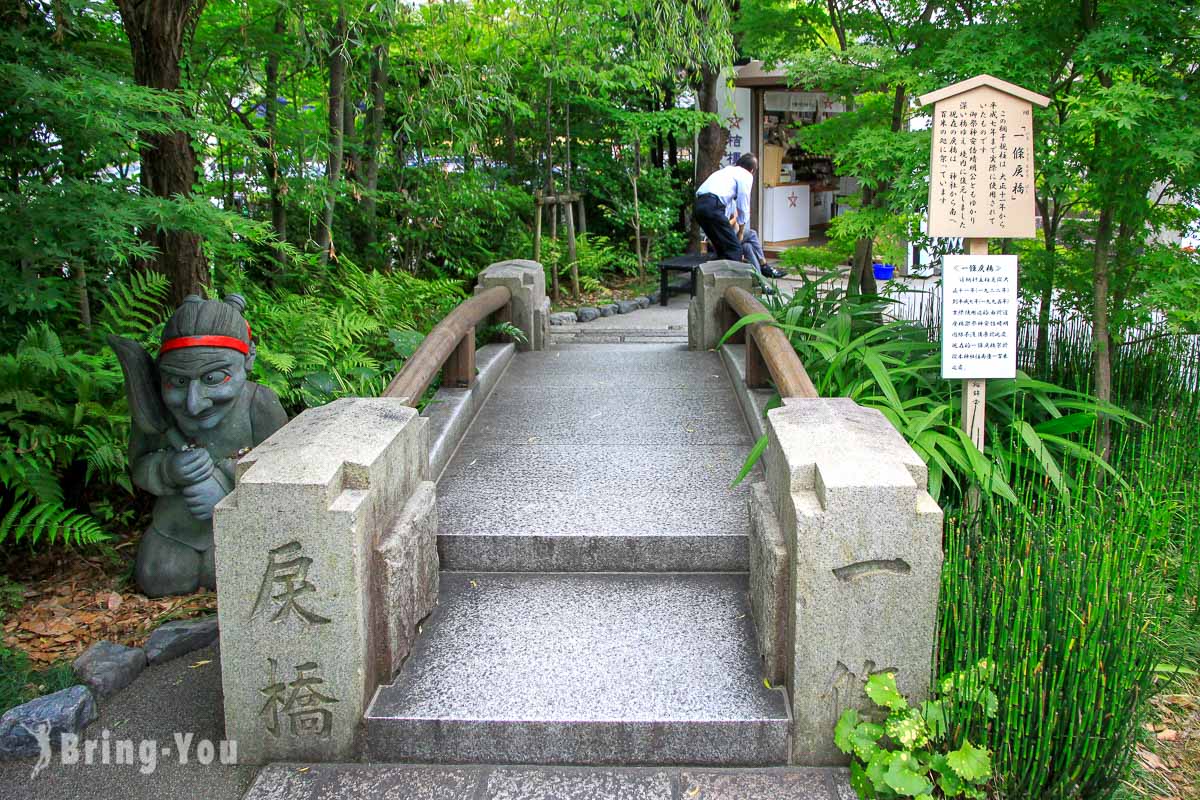
Adjacent to Ichijo Modoribashi, you’ll find a captivating statue depicting the divine spirit known as the shikigami. While the original Horikawa Ichijo Bridge, located near the shrine, may no longer stand, its enigmatic legend continues to hold great renown. Ichijo Modoribashi is believed to serve as a sacred link between the realms of the living and the underworld, where numerous demons are said to roam its expanse. In fact, Abe no Seimei himself placed divine spirits beneath the bridge, entrusted with the task of vigilantly monitoring these ethereal creatures.
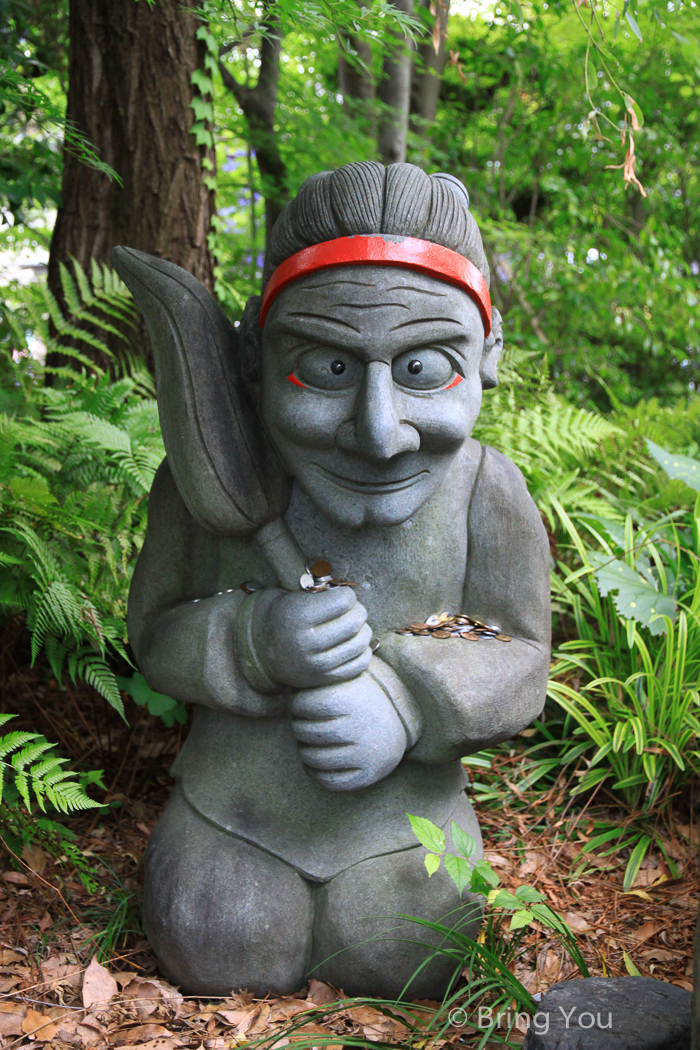
Yin and Yang Pillars
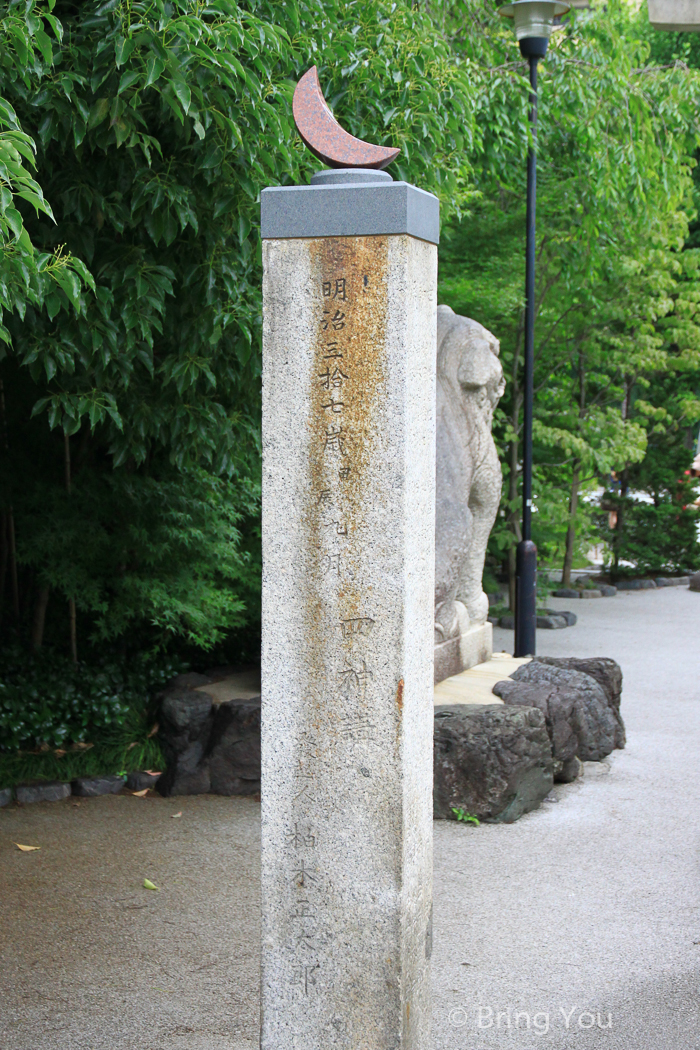
Once you’ve crossed the bridge, you’ll find yourself on the Sandou, the enchanting entrance path leading to the main shrine. As you make your way along this sacred trail, your eyes will be drawn to two magnificent stone pillars adorning the landscape. One pillar bears the resplendent figure of the sun, while the other is crowned with the serene visage of the moon. These exquisite stone statues hold great significance for worshippers, with the south pillar representing the radiant power of the sun, and the north pillar embodying the gentle allure of the moon. Together, they symbolize the harmonious interplay of yin and yang, creating a serene ambiance that envelops the shrine grounds.
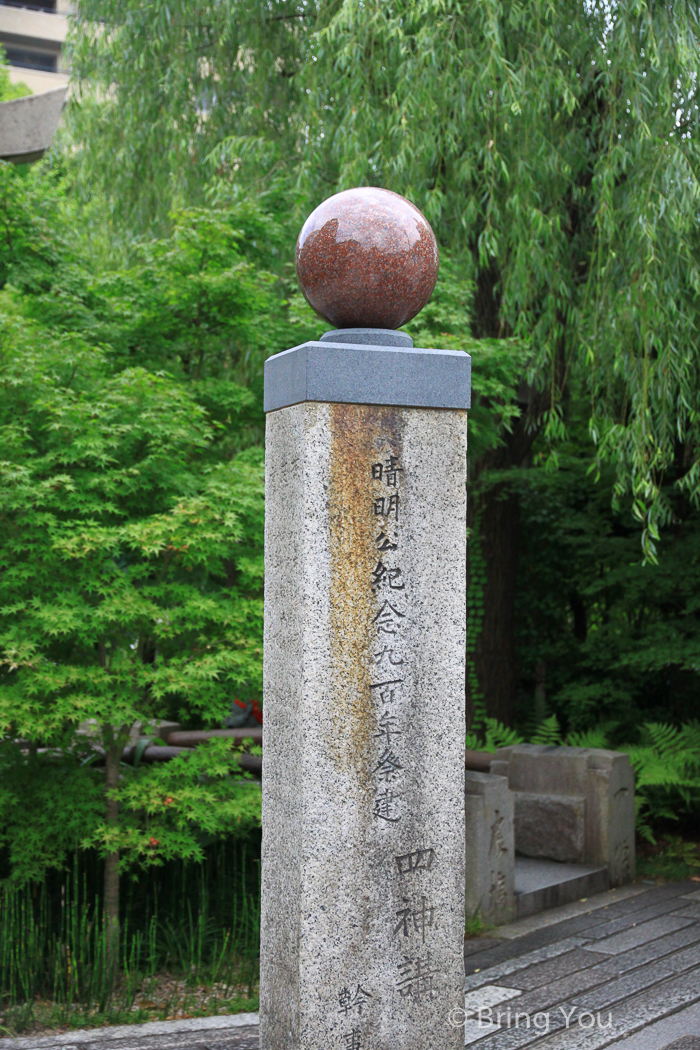
The Second Torii Gate of Seimei Shrine
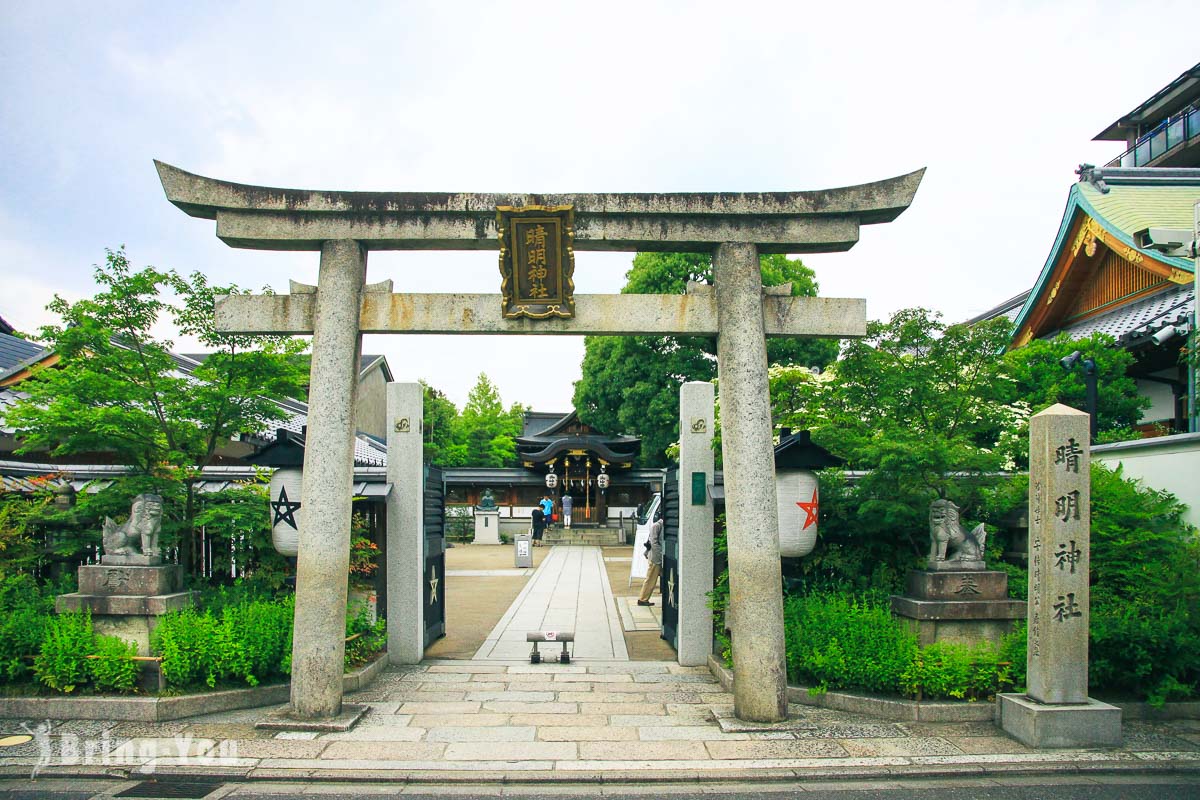
Continuing your exploration, proceed through the second torii gate to enter Seimei Shrine, revealing a captivating view of the entire shrine grounds and the majestic main hall nestled in the distance. Despite its modest size, the Seimei Shrine in Kyoto exudes a unique charm that captivates visitors.
Seimei Well
On the right side of the entrance, you’ll discover the enchanting “Seimei Well.” This captivating feature boasts a well adorned with a pentagram symbol, adding to its mystical allure. Many visitors find themselves drawn to this spot, captivated by the mesmerizing flow of water that seems to possess a hint of magical energy. Legend has it that the water from this well possesses healing properties, offering a remedy for various ailments. It’s no wonder that people are often found lingering by the well, eager to experience its purported transformative powers.
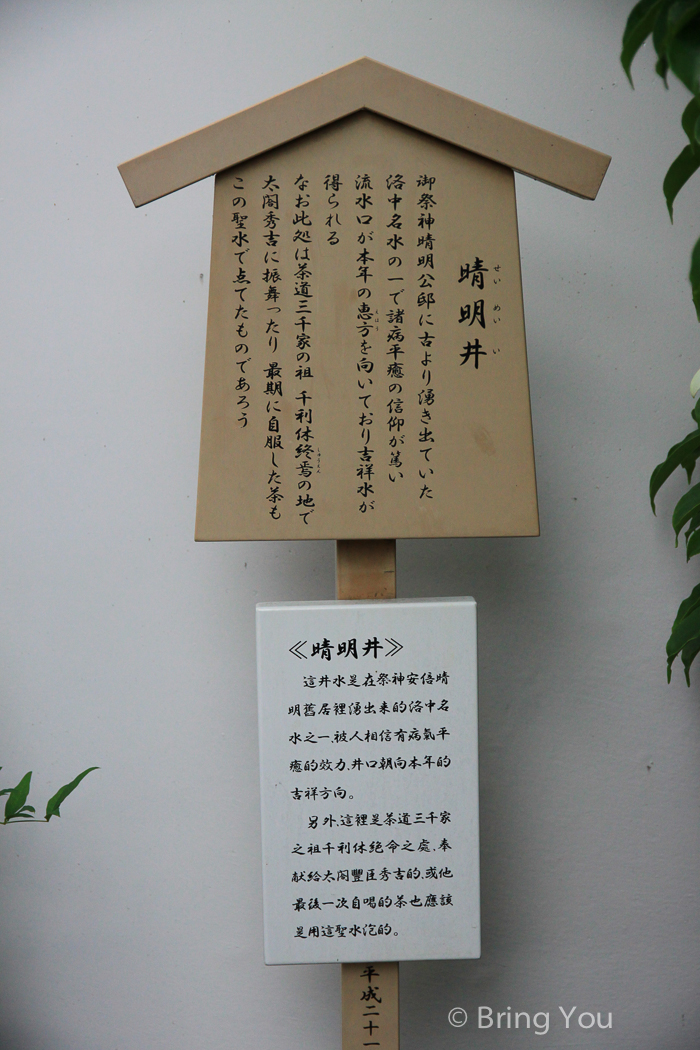
Upon closer examination of the lower circle of the well, a remarkable discovery awaits—the engraved coordinates of the twelve earthly branches. This intricate detail showcases the meticulous craftsmanship and attention to celestial alignment. Notably, on the day of the spring equinox each year, the shrine performs a fascinating ritual. The flow of water in the well is purposefully redirected to align with the optimal direction for that particular year. It’s a captivating display of the shrine’s commitment to harmonizing with the celestial forces and embracing the cyclical nature of time.
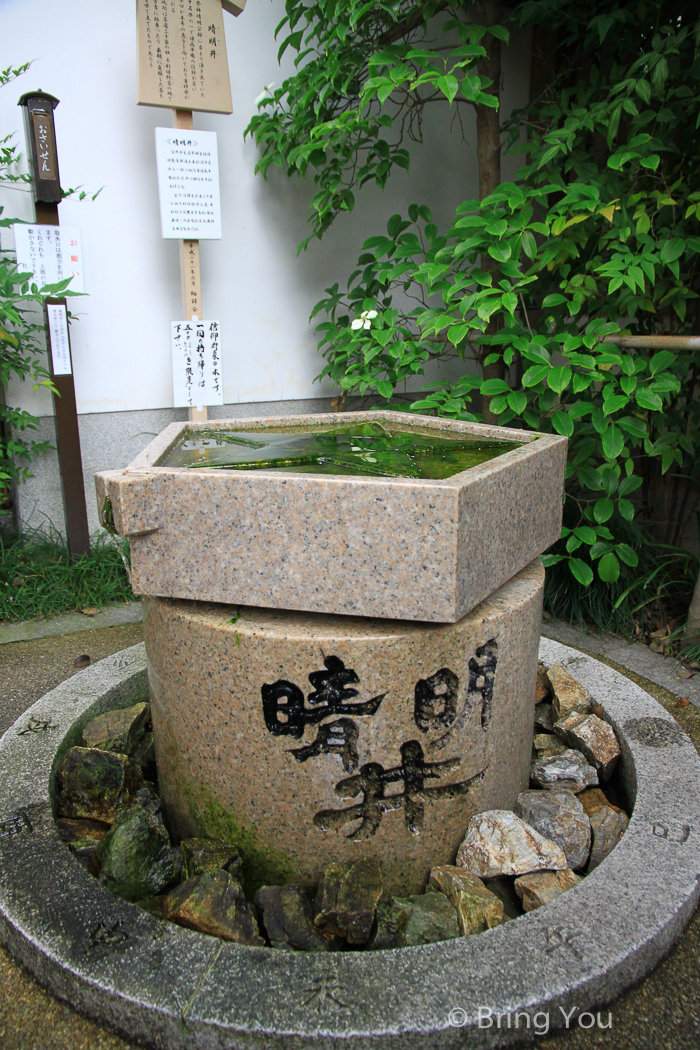
The location with fine seams is where the water flowed in the past. After being symbolized by the pentagram representing the harmony of yin and yang and the five elements, the water flow will turn in the best direction of the year.
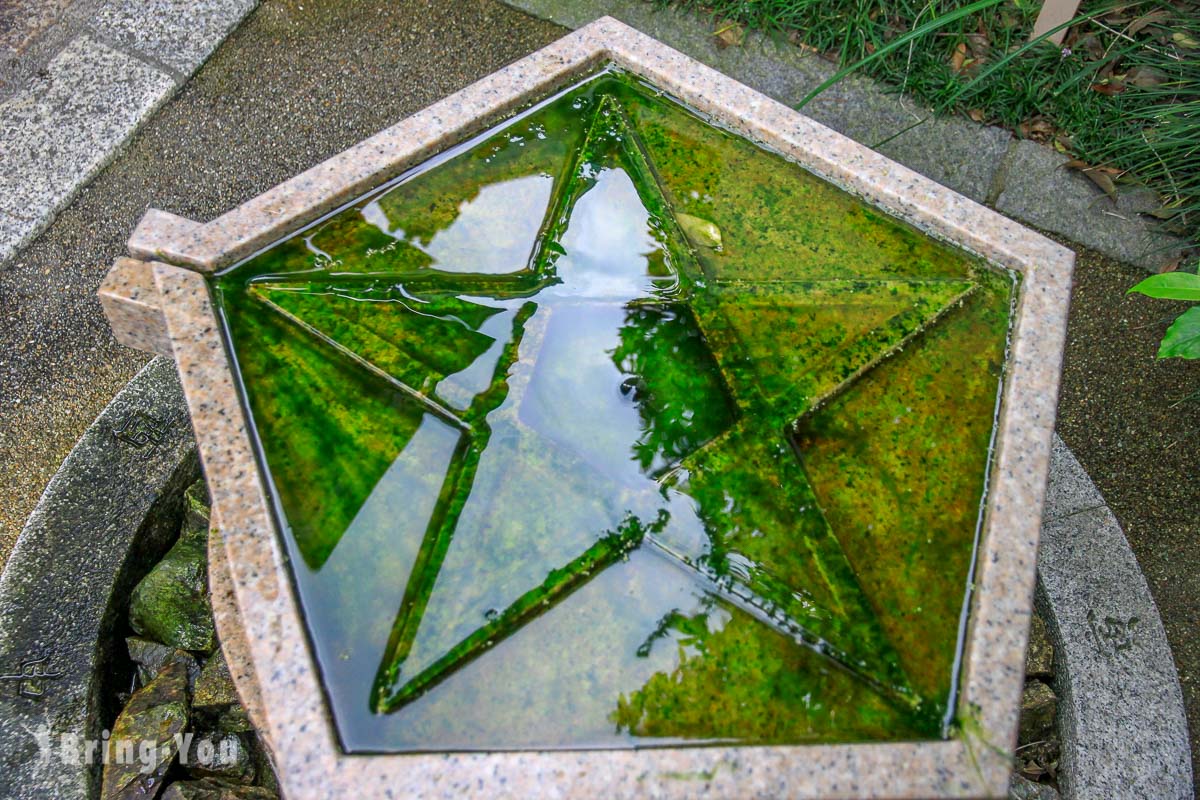
Honden (Main Hall)
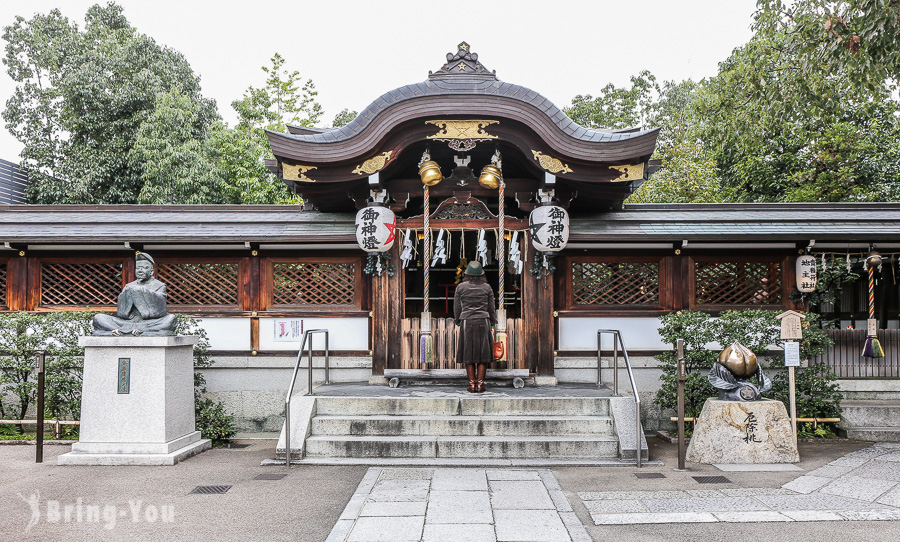
The Seimei Shrine is dedicated to Seimei, and many believers come to the main hall!
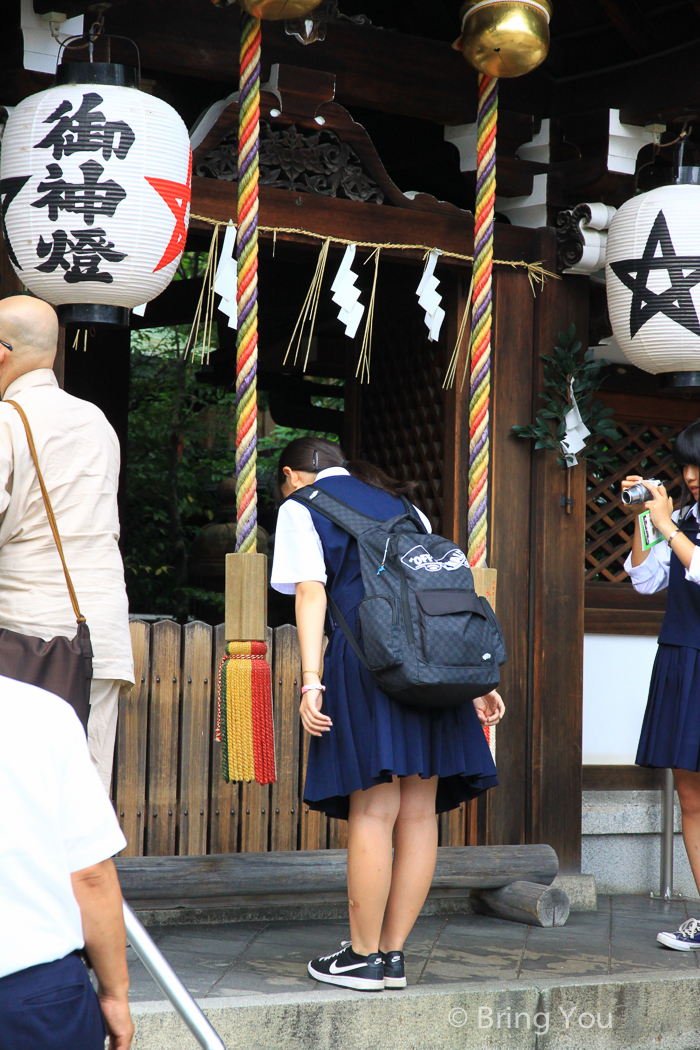
Abe no Seimei Statue
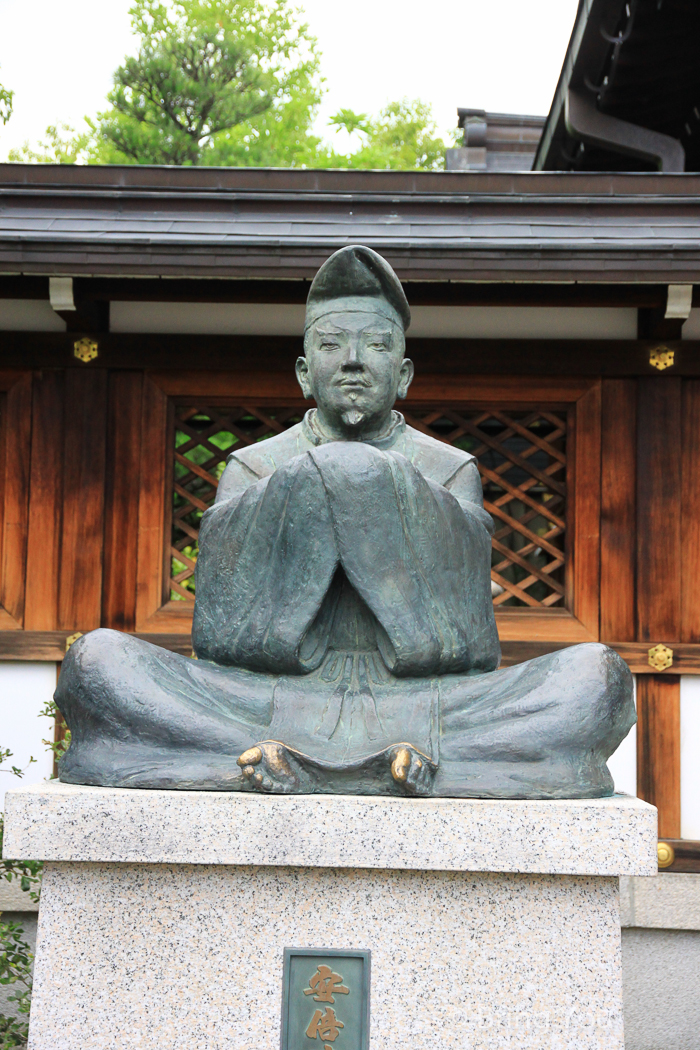
When visiting Seimei Shrine, the Seimei bronze statue is a must-see. It is made based on the portrait of Seimei.
The Peach Statue
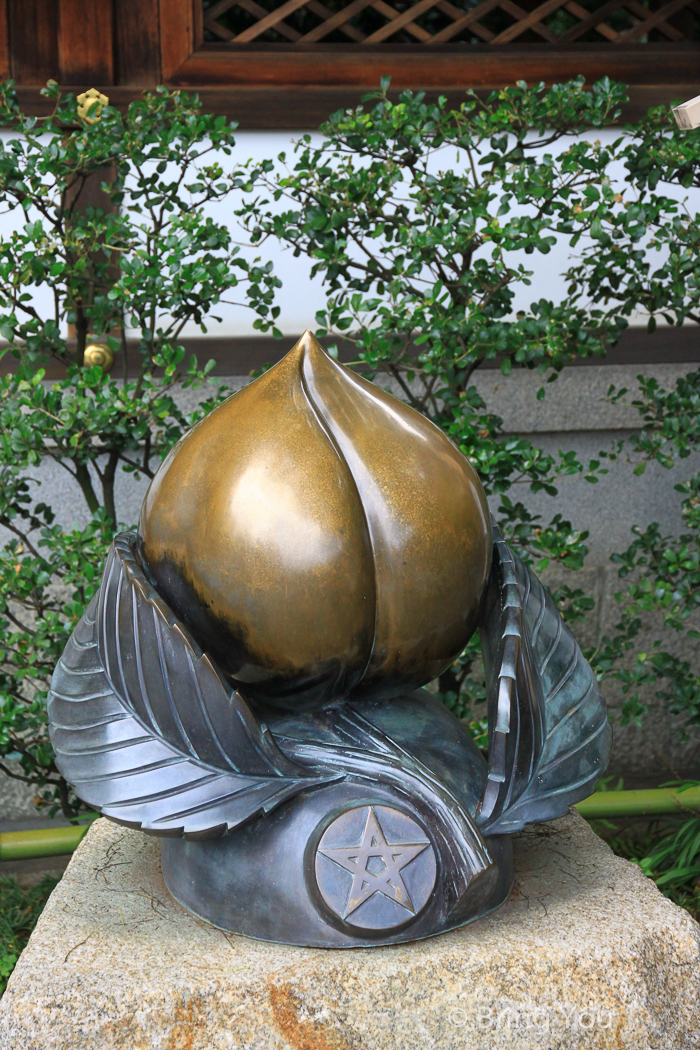
There is also the “Ekiyo Peach” in the area, which seems to be a demon-eliminating fruit in Japanese folklore just like Momotaro. The Ekiyo Peach on the right side of the main hall of Seimei Shrine is said to have the power to ward off evil spirits and bad luck by touching it, which attracts a lot of students to come and see it!
Divine Tree
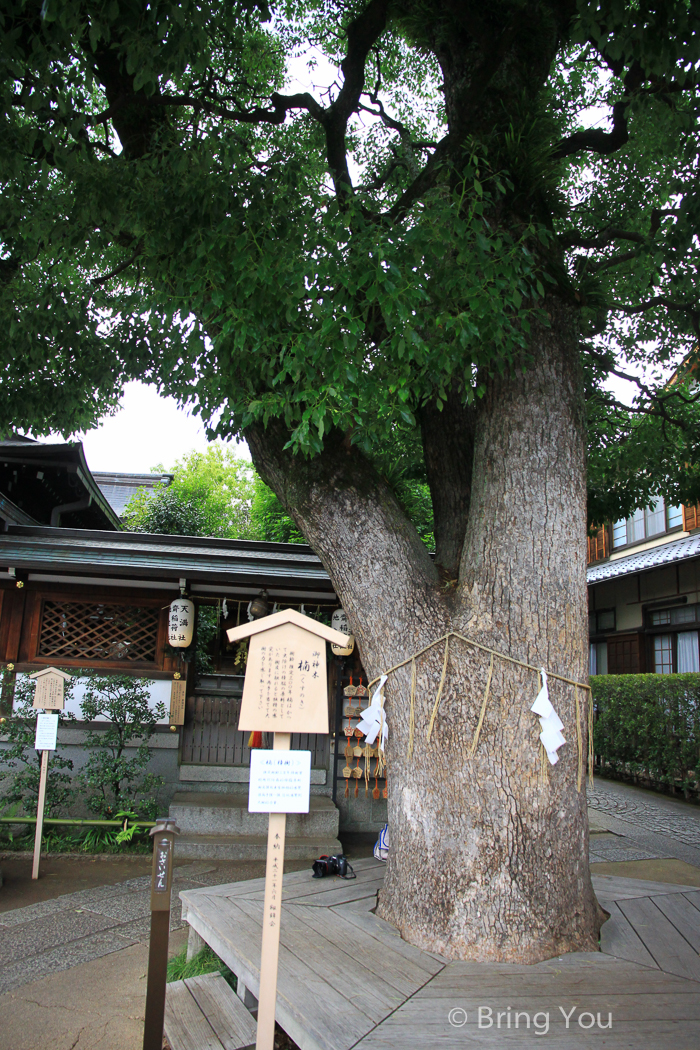
The sacred tree of Seimei Shrine is a Japanese cedar estimated to be about 300 years old. The sign says to lightly touch the trunk with both hands and feel the power of the tree… Hmm, there seems to be a faint spiritual energy, but it’s not very strong. Maybe it’s just my hands shaking… Anyway, the bark of the Japanese cedar feels quite unique.
Goshuin
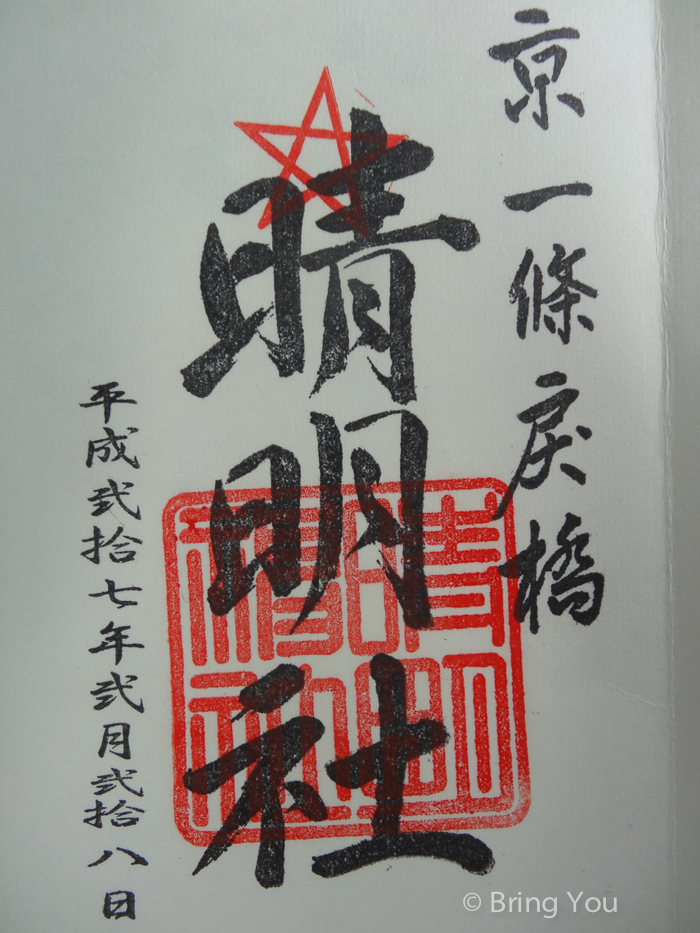
Before leaving the shrine, don’t forget to purchas Goshuin which has a exclusive vermilion seal for Seimei Shrine.
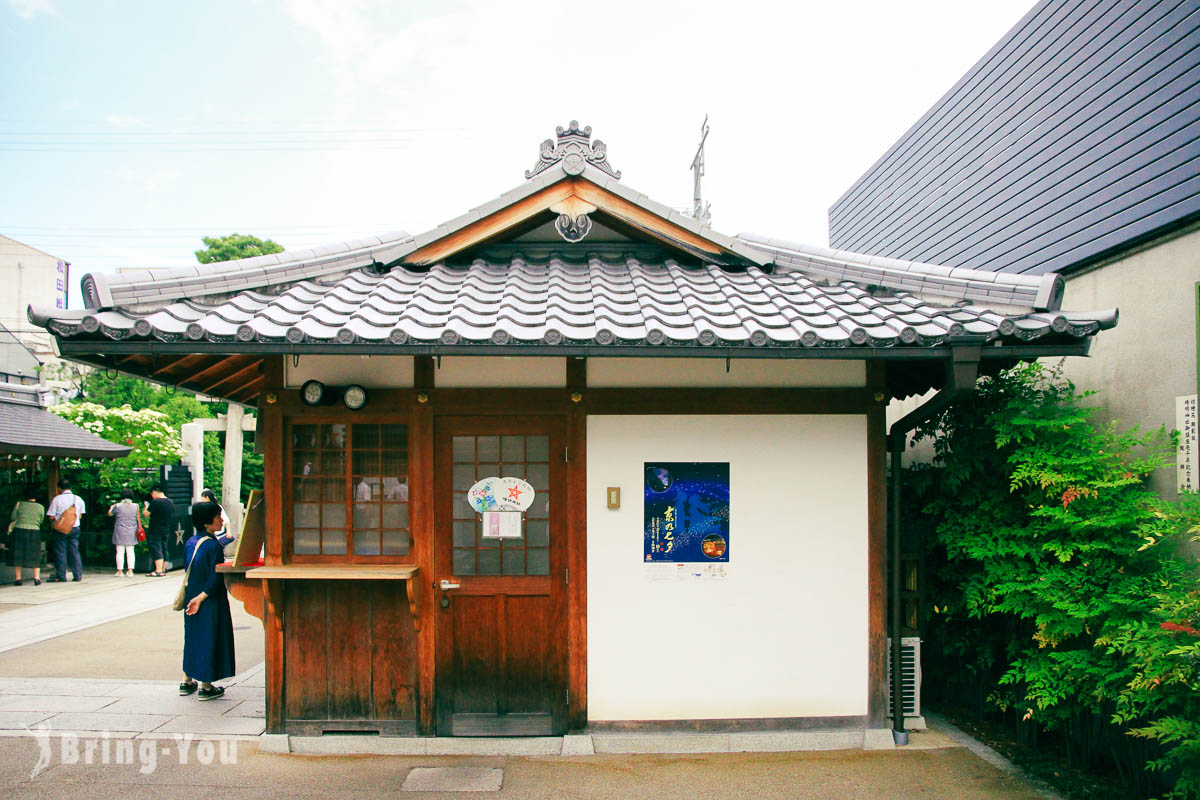
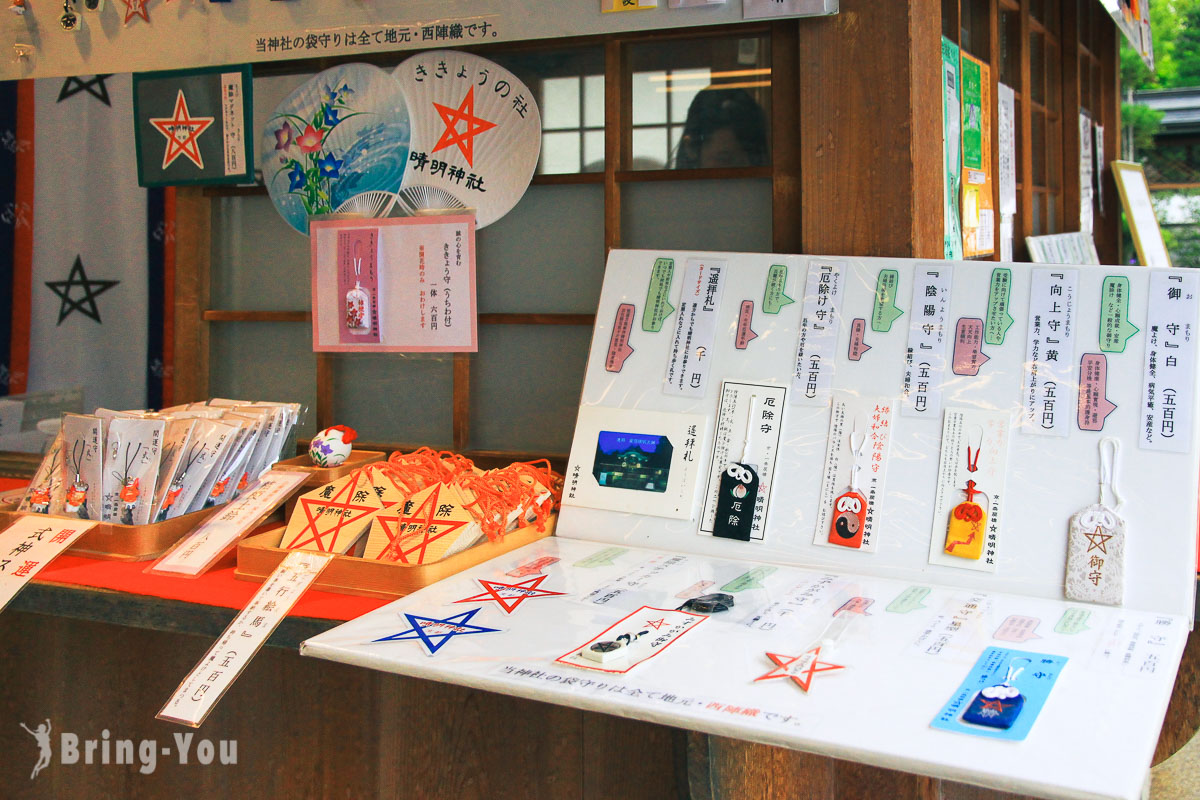
There are also stand-up signs that can be dressed up as Seimei for taking photos together.
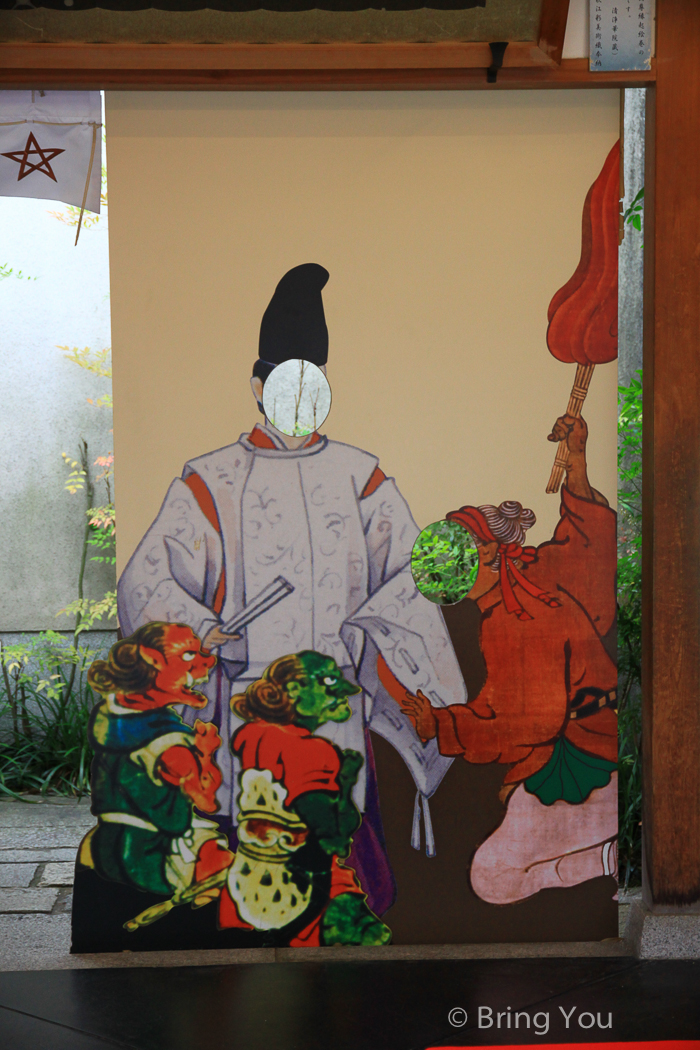
Abe no Seimei, who has a legendary reputation, has a unique shrine dedicated to him, and as a fan of Seimei, I truly love this place.
Scenic Spots Near Seimei Shrine
Here are several cherry blossom and ginkgo spots near Seimei Shrine that can be easily reached by bus. Let’s add them to your itinerary for reference!
- 【Kyoto Cherry Blossom Viewing Spots】Nijo Castle: A World Heritage Site Transformed into a Dazzling Night Sakura Light Show
- 【Kyoto Ginkgo Trees】Horikawa-dori Ginkgo Avenue: A Beautiful Golden Carpet in Horikawa Imadegawa during Autumn
- 【Kyoto Cherry Blossom Viewing Spots】Kyoto Gyoen National Garden: Guide to Visiting the Kyoto Imperial Palace and Transportation
Everything You Need to Know about Kyoto
Explore more of our adventures around Kyoto:
- Attractions: Best Places to Visit in Kyoto
- Hidden Gems: Kyoto Secrets and Hidden Gems
- Food: Ultimate Kyoto Food Guide
- Hotel: Where to stay in Kyoto
- Seasons: Kyoto’s Best Autumn Foliage Viewing Spots, Kyoto’s Best Sakura-Watching Spots
Simplify Your Kyoto Trip
